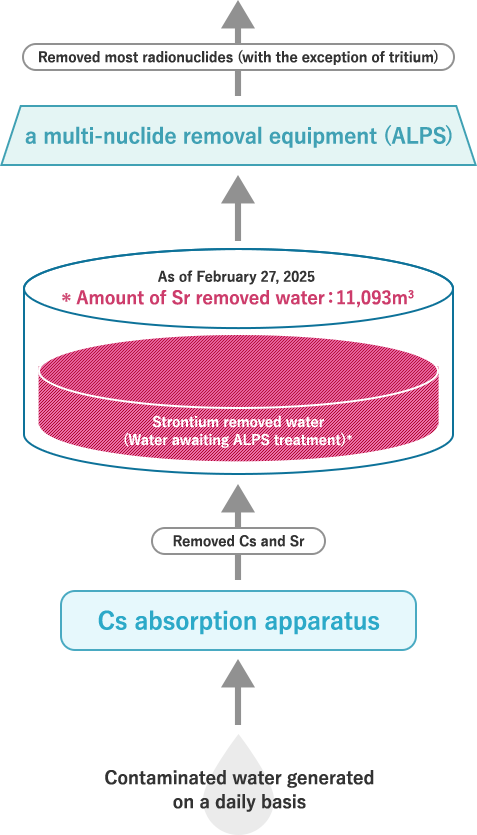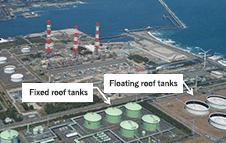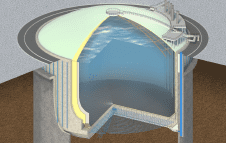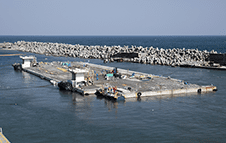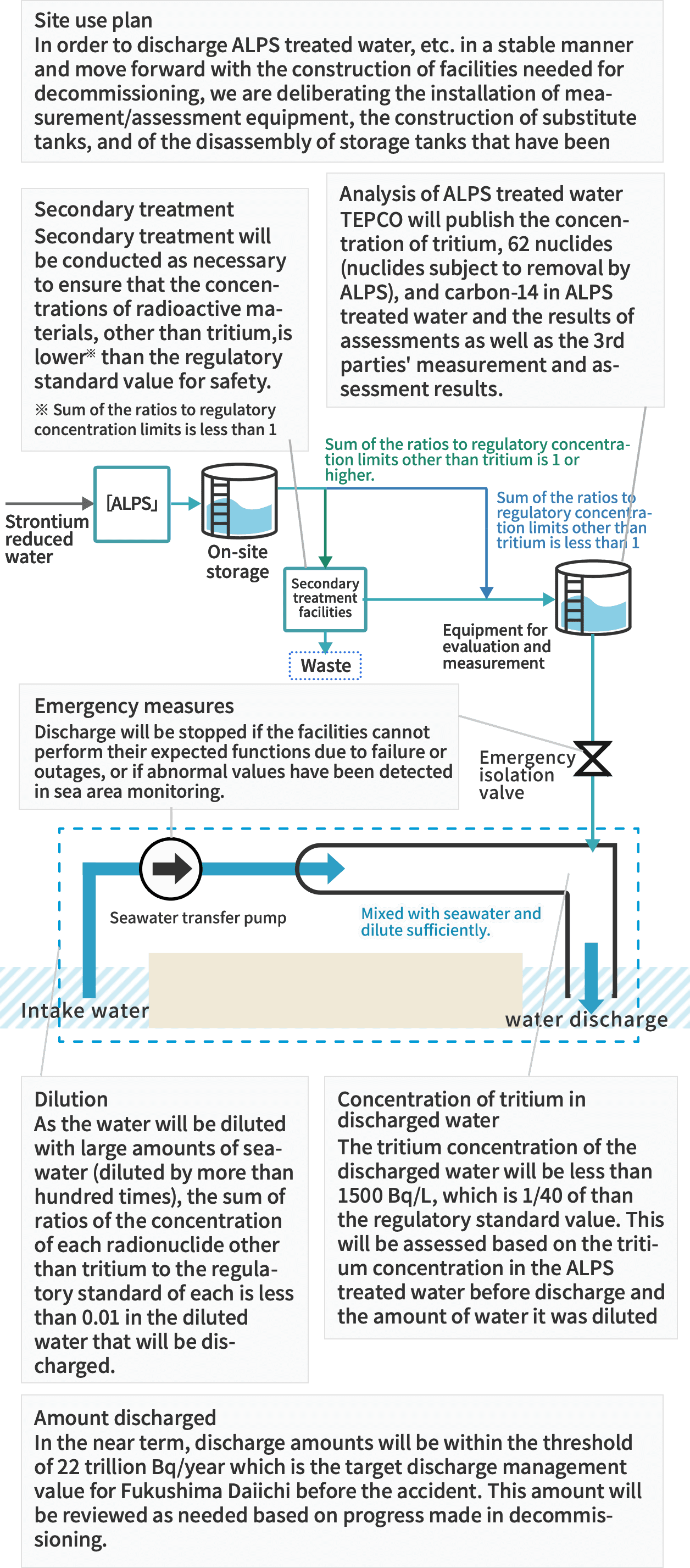Amount of ALPS treated water, etc.
0%
reduction
since the commencement of
ALPS treated water discharge (August 2023)
Prior to the commencement of ALPS treated water discharge 1,336,502㎥
1297499
*Amount of water containing amount between the bottom of
a tank and the lower measuring limit of the level gauge
Amount of ALPS treated water, etc. prior to
the commencement of discharge (August 2023)
1,336,502
- Amount of ALPS treated water generated since the commencement of discharge
- :
- Total discharge amount of ALPS treated water
- :
Amount of ALPS treated water, etc.
Reduction amount:
(% reduction since the commencement of discharge)
At the Fukushima Daiichi Nuclear Power Station, ALPS treated water, etc. (" " and ""), which is contaminated water that has been treated with multi-nuclide removal equipment (ALPS), is stored. And, water awaiting ALPS treated is also temporarily stored.
・ALPS treated water
Before each ALPS treated water discharge, we confirm that government standards for discharge into the environment have been met.
・Water to be re-purified
Before treated water to be re-purified is discharged into the sea, it is repeatedly purified with ALPS until government standards are met.
Click here for number of tanks, amount of ALPS treated water, etc.(ALPS treated water, water to be re-purified)and Strontium removed water(water to be treated with ALPS) stored in tanks.
Radioactive Concentration Contains in ALPS treated water, etc.
- 33%
(390,200m³)
Only ALPS treated
water is discharged.
- 30%
(351,200m³)
- 18%
(209,600m³)
- 14%
(161,700m³)
- 5%
(56,700m³)
A
L
P
S
t
r
e
a
t
e
d
w
a
t
e
r
W
a
t
e
r
t
o
b
e
-
p
u
r
i
f
i
e
d
(As of September 30, 2025)
*Only completely filled tanks were used to calculate the amount, so this amount may differ from the entire amount of stored water.
Amount of ALPS treated water and water to be re-purified broken down by the sum of the ratios to regulatory concentrations limits (estimate)
- 〜1time
- 1time〜5times
- 5times〜10times
- 10times〜100times
- 100times〜19,909times
- Sum may not be 100 because storage percentages have been rounded to integers.
Currently,
is being stored in tanks after most of the radionuclides have been removed, with the exception of tritium. Multi-nuclide removal equipment is capable of removing radioactive substances (excluding tritium) to the point where the concentrations of these substances are lower than
, which are part of . However, due to equipment malfunctions at the beginning of the facility operation and different operational objectives at the time , the current amount of treated water being stored broken down by is as shown in the above diagram.
More detail at the radioactive concentrations of each storage tank area
More detail at ALPS treated water, etc. data from the ALPS outlet
Click here for details on how storage amounts have increased since the last update (June 30, 2025).




